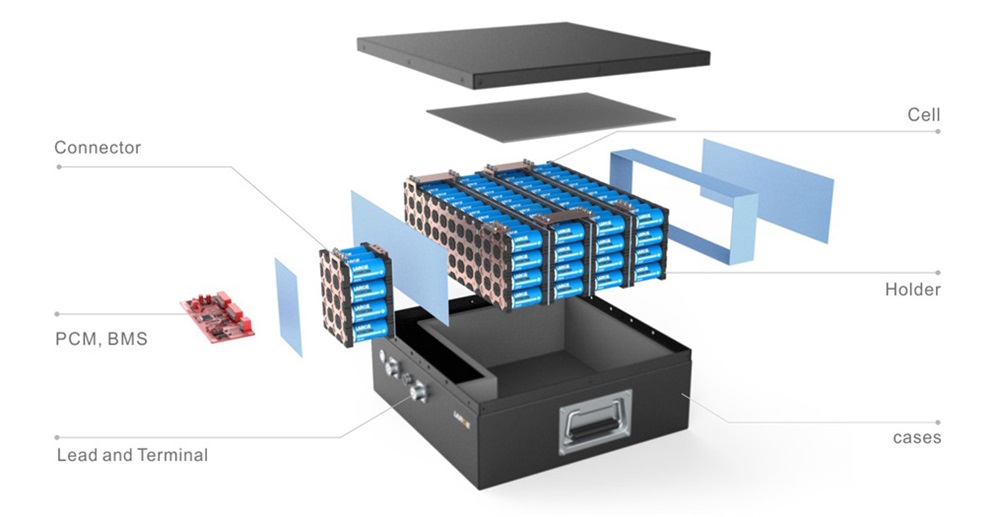Lithium Batteries in Series or parallel
The definition of Lithium batteries in series or parallel
Due to the limited voltage and capacity of the single battery, in actual use, a series-parallel combination is required to obtain a higher voltage and capacity to meet the actual power supply requirements of the equipment.
-
Lithium batteries in series: the voltage is added, the capacity remains unchanged, and the internal resistance increases.
-
Lithium batteries in parallel: the voltage remains the same, the capacity is added, the internal resistance is reduced, and the power supply time is extended.
-
Lithium battery series and parallel: Both parallel combination and series combination are in the middle of the battery pack, which increases the voltage and capacity.
-
The voltage of batteries in series: 3.7V single cells can be assembled into a battery pack with a voltage of 3.7*(N)V according to needs (N: number of single cells); Such as 7.4V, 12V, 24V, 36V, 48V, 60V, 72V, etc.
-
The capacity of batteries in parallel: 2000mAh single battery can be assembled into a battery pack with a capacity of 2*(N)Ah according to needs (N: number of single cells); Such as 4000mAh, 6000mAh, 8000mAh, 5Ah, 10Ah, 20Ah, 30Ah, 50Ah, 100Ah, etc.
The Lithium Battery Packs
The lithium battery PACK refers to the processing, assembly, and packaging of lithium battery packs. The process of assembling lithium cells into groups is called PACK, which can be a single battery or a series and parallel lithium battery PACK, etc. Lithium battery pack usually consists of a plastic shell, protective plate, battery, output electrode, a connection touch sheet, and other insulating tapes, double-sided tape, etc.
-
Lithium cell: The core of a finished battery
-
Protection plate: overcharge, over-discharge, overcurrent, short circuit, NTC temperature control intelligent protection, and other functions.
-
Plastic case: the supporting skeleton of the entire battery; The positioning and fixing of the protection plate; Bear all other non-shell parts and limits.
-
Terminal lead can provide charging and discharging interfaces for various electronic products, energy storage products, and backup power supplies.
-
Nickel plate/bracket: connecting and fixing components of electric cells
The notes on series and parallel connection of lithium batteries
-
Do not use different brands of batteries together.
-
Do not use batteries of different voltages together.
-
Do not mix various capacities or old and new lithium batteries.
-
Batteries of various chemical materials should not be combined, such as nickel-metal hydride and lithium batteries.
-
Replace all batteries when they run low.
-
Use a lithium battery protection plate with corresponding parameters.
-
Select batteries with consistent performance. Generally, lithium battery cells need to be paired for serial and parallel use. Pairing criteria: voltage difference ¡Ü10mV, internal resistance difference ¡Ü5m ¦Ø, capacity difference ¡Ü20mA
Edit by editor


